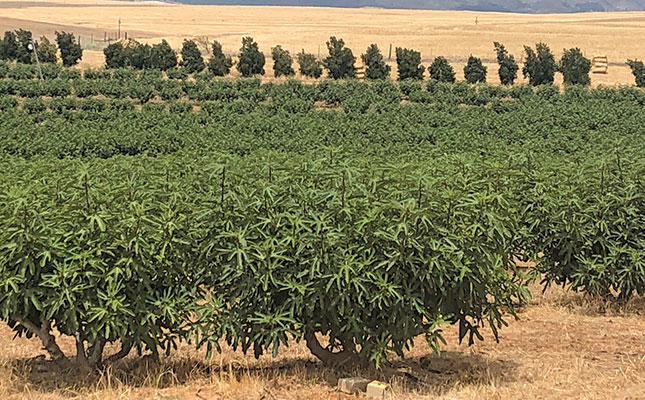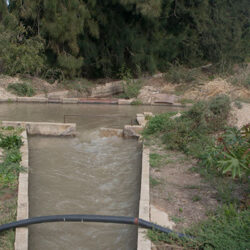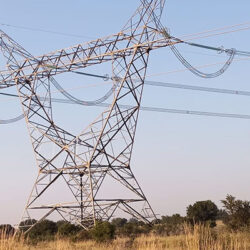Designed specifically for South African conditions, the NOVAP Sub-Surface Water Diffuser facilitates deep root irrigation and supplies water directly to a plant’s root system.
As no water is exposed to the soil surface, moisture loss through evaporation is dramatically reduced.
Ferdinand de Klerk, NOVAP’s brand manager, says the system was developed and patented in Cape Town by Jan Nortjé, an inventor who strives to provide practical solutions to specific problems. “His insight into technical challenges has led to the registration of various international inventions,” says De Klerk.
Development started in 2013, and the irrigation system was launched in April 2017. Trials have shown water-use reduction of as much as 70%. In a Western Cape trial on 1ha of table grapes, a total water saving of 56,8% and a yield improvement of 31,5% were recorded after the change from micro irrigation to deep root irrigation.
The NOVAP system is suitable for any type of tree or shrub, including roses and other perennial scrubs with root systems deeper than 150mm. Fruit trees, vineyards, as well as nuts and date trees respond particularly well to this type of irrigation, according to De Klerk.
Water table at root level
The system consists of a compact plastic unit installed at the optimal depth for specific crops, typically 250mm. It supplies water and liquid fertiliser at a steady rate for maximum uptake, and artificially creates an underground water table at root level.
Depending on the soil type, a hydrated bulb with a radius of up to 600mm is formed 1,2m deep. The capillary movement of water allows the moisture to rise 120mm to 150mm above the system.
(Capillary action is the ability of a liquid to flow sideways and even upwards in narrow spaces without the assistance of external forces.)
“The subsurface water diffuser is placed in such a way that the hydrated underground bulbs overlap. This causes a long, continuous water table at root level,” De Klerk explains.
Ideally, the unit is attached to a solid feed line with regulated water outlets (drippers) feeding into it.
When the pumps are switched on, water is pumped from the source, such as a dam, through the main lines to the lands. From the moment it leaves the original source, the water is never exposed to sun or wind.
“This is why 100% of the irrigation water reaches the plants’ deep root levels. At the end of an irrigation cycle, all the water drains out into the soil.
Trials have shown that the soil temperature remains constant at an average of between 18°C and 22°C,” says De Klerk.
Research has found that when the soil temperature reaches 18°C, the plant can function at an optimal transpiration rate. Transpiration, which is water evaporation mainly via the stomata, aids the uptake of nutrient-rich water from the roots, aiding growth.
Deep root irrigation also results in higher chlorophyll content. In mature vine leaves, an improvement of as much as 7,4% was recorded.
The amount of chlorophyll in a leaf contributes to its transpiration efficiency. Higher levels of chlorophyll and increased root temperature work together to improve plant transpiration and fruit development.
“Visually, the differences in foliage growth, fruit size and colouration of the grapes were immediately evident. A plant’s leaf can be described as its food-manufacturing facility.
More and larger leaves result in a well-functioning plant, which obviously results in improved yield and quality,” says De Klerk.
Improving efficiency
Deep root irrigation uses considerably less water, and in South Africa’s dry climate, this is obviously welcome. But reducing water use has two additional benefits: it helps cut electricity usage, saving money, and it results in less humidity in the plant foliage canopy due to the dry soil surface.
Ferdi van Zyl, an independent environmental scientist and consultant in microbiology, plant pathology and botany, says that water savings of 56% were recorded in a deep root irrigation field trial in a 1ha block of Scarlotta table grapes in Piketberg.
The block of grapes was converted from micro irrigation to deep root irrigation in November 2017. In the first season, water use decreased 56%. The deep root irrigated block also showed a visible improvement in general foliage and grape size, compared with other blocks.
In another trial involving a block of Sweet Joy grapes in Robertson, water usage declined by 50%. The block was planted to the grapes in September 2017 and deep root irrigation was installed in January 2018.
“During my visit in December 2018, I noticed the difference in weed growth,” recalls Van Zyl. “With surface irrigation, all seeds present have the ideal opportunity to germinate. Deep root irrigation ensures dry surface soil, resulting in less weed growth and a reduction in the cost of weed control. Moreover, with water saving of at least 50% on average, we’re also recording better foliage growth.”
Increased soil moisture with less water
In a trial in Porterville, the NOVAP system was installed in a 2ha fig orchard, and tree growth monitored. The previous double- line drip irrigation had delivered water at a rate of 13,8ℓ/h/ tree but the deep root system was set to 8ℓ/h/ tree. The trees were planted in clay-rich soil on a slope.
According to Van Zyl, despite the fact that the water supply had been cut by 40%, the soil moisture content increased from less than 40% from 300mm downward to between 60% and 70% from between 400mm and 800mm deep.
Another advantage was a significant decrease in weed growth around the trees, which also have larger leaves than the trees in the surface drip blocks.
Email Ferdinand de Klerk at info@novap.co.za.




